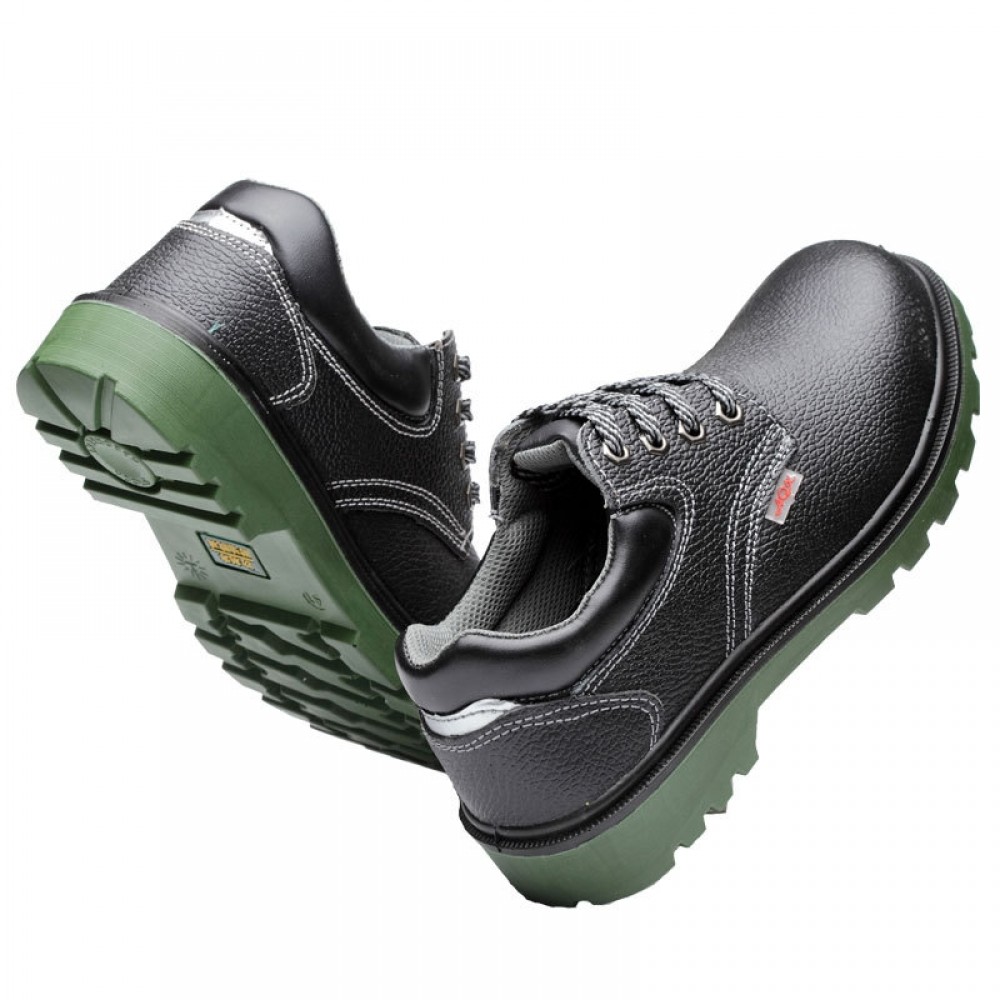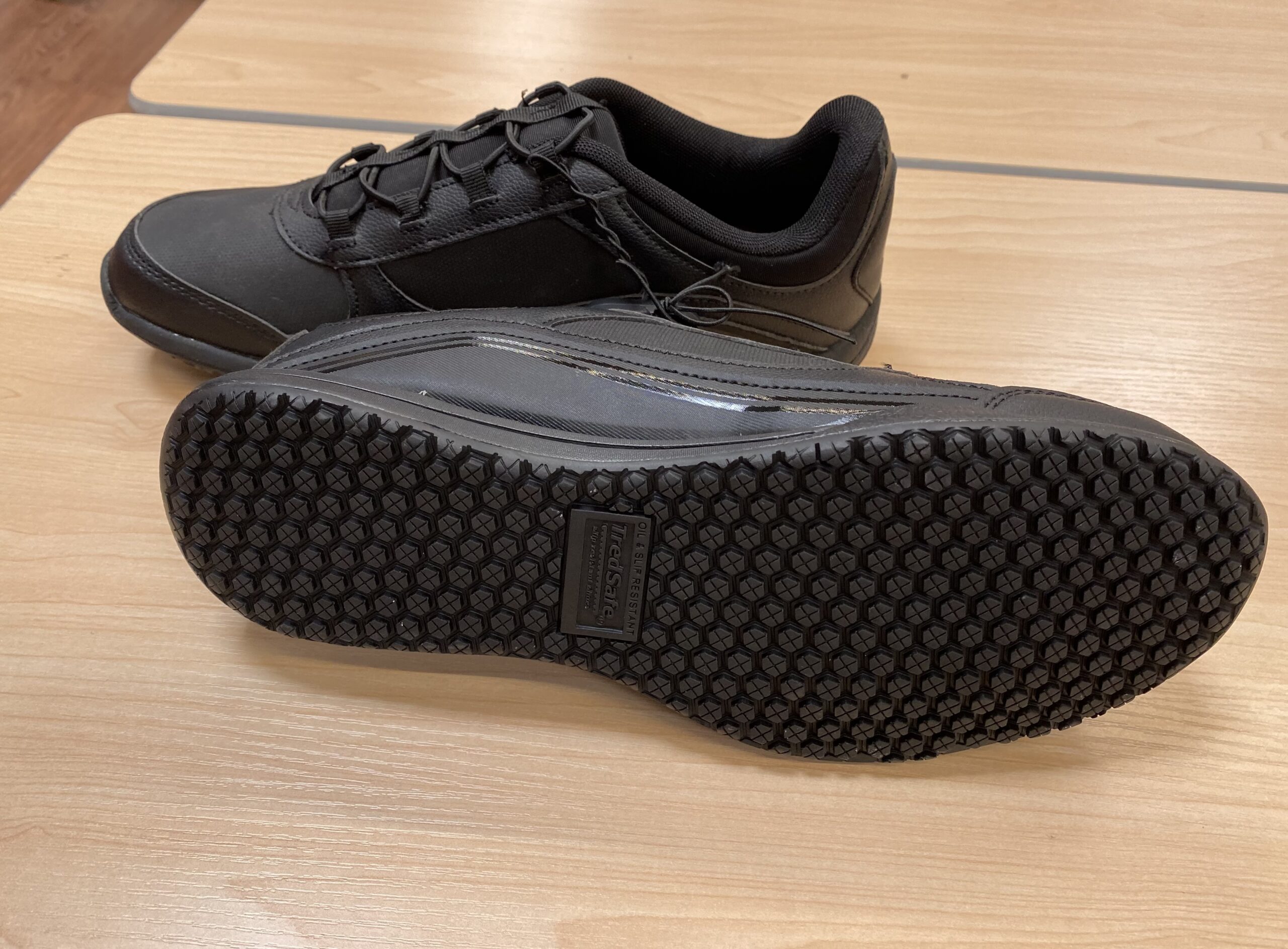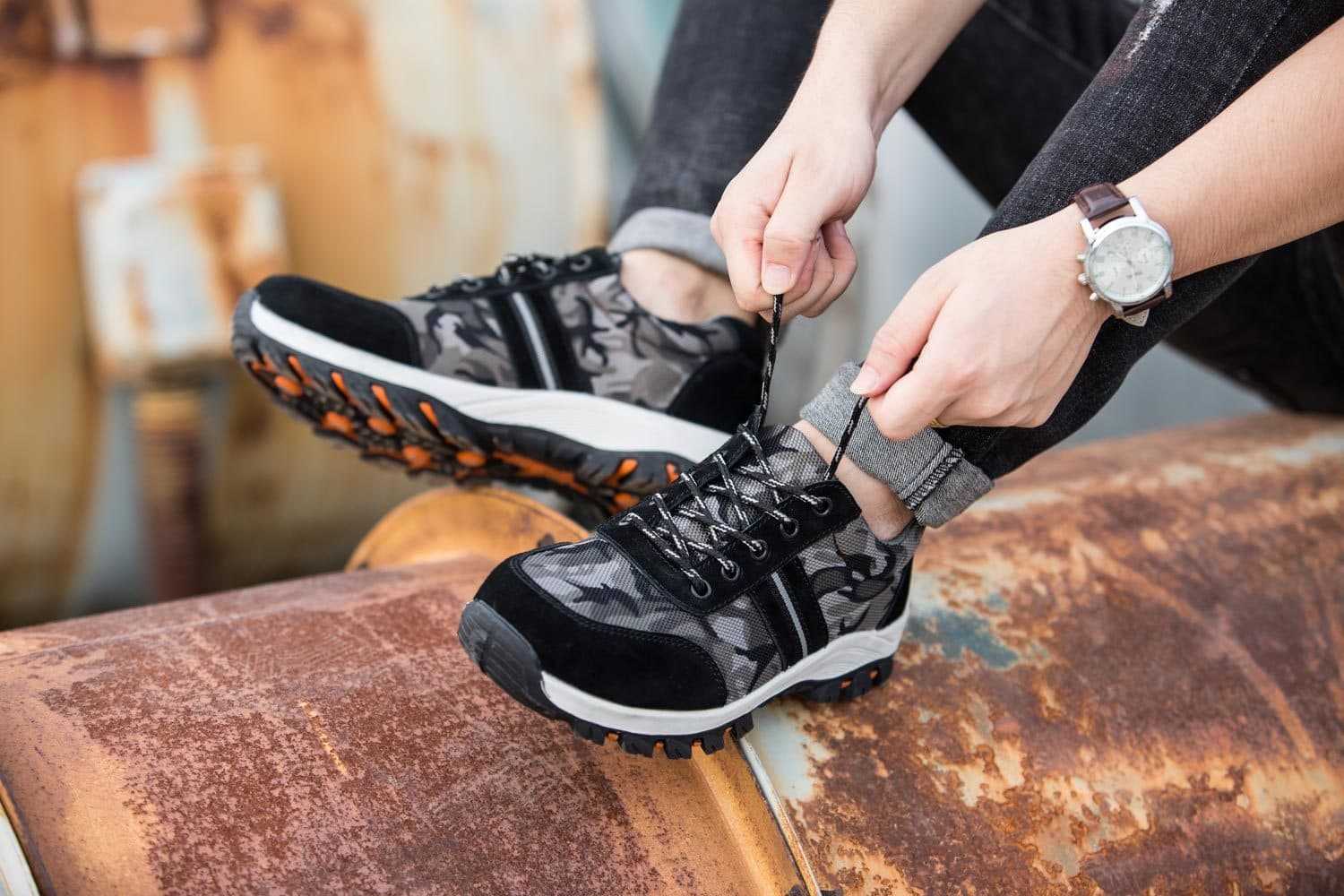Why Oil-Resistant Shoes Are a Must-Have for Industrial Workers
In industrial settings, slips, trips, and falls are a constant threat to worker safety. According to the Occupational Safety and Health Administration (OSHA), these accidents are a leading cause of workplace injuries and fatalities. In fact, the Bureau of Labor Statistics reports that in 2020, slips, trips, and falls accounted for 27% of all nonfatal workplace injuries. The consequences of these accidents can be devastating, resulting in lost productivity, medical expenses, and workers’ compensation claims.
One of the most effective ways to mitigate this risk is by wearing non-slip oil-resistant shoes. These shoes are specifically designed to provide traction on slippery surfaces, reducing the likelihood of accidents and injuries. Non-slip oil-resistant shoes are a must-have for industrial workers, as they can mean the difference between safety and disaster. By wearing these shoes, workers can have confidence in their ability to perform their jobs safely and efficiently, without worrying about the risks associated with slippery floors and oily surfaces.
In industries such as manufacturing, construction, and food processing, the risk of slips, trips, and falls is particularly high. Oil-resistant shoes are essential in these environments, as they provide a barrier against slippery substances and prevent accidents. By investing in high-quality non-slip oil-resistant shoes, employers can reduce the risk of workplace accidents, improve productivity, and create a safer working environment for their employees.
How to Choose the Right Slip-Resistant Shoes for Your Job
Selecting the right non-slip oil-resistant shoes for your job can be a daunting task, especially with the numerous options available in the market. However, it’s crucial to choose the right shoes that meet the specific demands of your industry and work environment. In this article, we’ll provide guidance on how to choose the best non-slip oil-resistant shoes for your job, considering factors such as sole material, tread pattern, and upper material.
For workers in the manufacturing industry, non-slip oil-resistant shoes with a rugged sole and deep tread pattern are ideal. These shoes provide excellent traction on oily surfaces and can withstand the heavy demands of a manufacturing environment. In contrast, workers in the food processing industry require shoes with a smooth, easy-to-clean sole and a breathable upper material to prevent the buildup of bacteria and other contaminants.
In the construction industry, non-slip oil-resistant shoes with a sturdy sole and ankle support are essential. These shoes provide protection from heavy objects and falls, while also providing traction on uneven surfaces. Additionally, shoes with a waterproof membrane and breathable upper material can help keep feet dry and comfortable in wet or humid conditions.
When selecting non-slip oil-resistant shoes, it’s also important to consider the specific hazards present in your work environment. For example, if you work with chemicals or other hazardous materials, you may require shoes with a chemical-resistant sole and upper material. Similarly, if you work in an environment with extreme temperatures, you may require shoes with insulation or thermal protection.
By considering these factors and choosing the right non-slip oil-resistant shoes for your job, you can reduce the risk of accidents and injuries, improve productivity, and create a safer working environment. Remember, the right shoes can make all the difference in your ability to perform your job safely and efficiently.
Top Brands for Non-Slip Oil-Resistant Shoes: A Review
When it comes to non-slip oil-resistant shoes, there are several top brands that stand out from the rest. In this review, we’ll take a closer look at popular brands like Dr. Martens, Timberland, and Thorogood, highlighting their features, benefits, and customer reviews to help readers make informed purchasing decisions.
Dr. Martens is a well-known brand that offers a range of non-slip oil-resistant shoes designed for industrial workers. Their shoes feature a rugged sole with deep treads, providing excellent traction on oily surfaces. With a comfortable and breathable upper material, Dr. Martens shoes are ideal for workers who need to be on their feet all day. Customer reviews praise the durability and comfort of Dr. Martens shoes, with many workers reporting a significant reduction in slips and falls.
Timberland is another popular brand that offers high-quality non-slip oil-resistant shoes. Their shoes feature a unique tread pattern that provides traction on both oily and dry surfaces. With a waterproof membrane and breathable upper material, Timberland shoes are perfect for workers who need to navigate wet or humid environments. Customer reviews rave about the comfort and support of Timberland shoes, with many workers reporting improved productivity and reduced fatigue.
Thorogood is a brand that specializes in non-slip oil-resistant shoes for industrial workers. Their shoes feature a rugged sole with a unique tread pattern that provides traction on oily surfaces. With a comfortable and breathable upper material, Thorogood shoes are ideal for workers who need to be on their feet all day. Customer reviews praise the durability and comfort of Thorogood shoes, with many workers reporting a significant reduction in slips and falls.
When choosing a brand for non-slip oil-resistant shoes, it’s essential to consider factors such as comfort, durability, and traction. By selecting a reputable brand like Dr. Martens, Timberland, or Thorogood, workers can ensure they have the right footwear to perform their job safely and efficiently. Remember, non-slip oil-resistant shoes are a crucial investment for any industrial worker, and choosing the right brand can make all the difference.
The Science Behind Slip-Resistant Soles: Understanding the Technology
Non-slip oil-resistant shoes are designed to provide traction on oily or slippery surfaces, reducing the risk of slips, trips, and falls in hazardous work environments. But have you ever wondered how these shoes achieve this remarkable feat? In this article, we’ll delve into the science behind slip-resistant soles, exploring the materials and technologies that make them so effective.
The secret to non-slip oil-resistant shoes lies in the sole material. Manufacturers use a range of materials, including rubber, polyurethane, and silicone, to create soles that can grip oily surfaces. These materials are chosen for their unique properties, such as high friction coefficients and resistance to oil and chemicals. By combining these materials with clever design features, manufacturers can create soles that provide exceptional traction on even the most slippery surfaces.
One of the key technologies used in non-slip oil-resistant shoes is the tread pattern. The tread pattern is designed to channel oil and other liquids away from the sole, allowing the shoe to maintain contact with the surface. This is achieved through the use of deep grooves and channels that are carefully arranged to maximize traction. By directing oil away from the sole, the tread pattern ensures that the shoe remains stable, even on extremely slippery surfaces.
In addition to the sole material and tread pattern, non-slip oil-resistant shoes often feature other innovative technologies. For example, some shoes use a unique compound that is infused with microscopic particles, such as silica or alumina, to increase friction. Others use advanced manufacturing techniques, such as injection molding, to create complex sole geometries that provide exceptional traction.
By understanding the science behind slip-resistant soles, workers can appreciate the importance of wearing non-slip oil-resistant shoes in hazardous work environments. By choosing shoes with advanced sole materials and technologies, workers can reduce the risk of accidents and injuries, improving safety and productivity in the workplace. Remember, non-slip oil-resistant shoes are a crucial investment for any industrial worker, and understanding the technology behind them can help workers make informed purchasing decisions.
Slip-Resistant Shoes vs. Regular Shoes: What’s the Difference?
When it comes to footwear, not all shoes are created equal. While regular shoes may be suitable for everyday activities, they are often inadequate for hazardous work environments. Non-slip oil-resistant shoes, on the other hand, are specifically designed to provide traction and protection in slippery or oily conditions. But what exactly sets them apart from regular shoes?
One of the most significant differences between non-slip oil-resistant shoes and regular shoes is the sole material. Non-slip oil-resistant shoes feature soles made from materials like rubber, polyurethane, or silicone, which are designed to provide exceptional grip on oily or slippery surfaces. Regular shoes, by contrast, often have soles made from less durable materials that can become slippery in hazardous conditions.
Another key difference is the tread pattern. Non-slip oil-resistant shoes feature unique tread patterns that are designed to channel oil and other liquids away from the sole, allowing the shoe to maintain contact with the surface. Regular shoes, on the other hand, often have simpler tread patterns that are not designed to handle slippery conditions.
In addition to the sole material and tread pattern, non-slip oil-resistant shoes often feature other safety features that are not found in regular shoes. For example, they may have steel toes or other protective features to prevent injuries in the event of an accident. They may also have breathable upper materials and moisture-wicking linings to keep feet cool and dry in hot or humid environments.
Perhaps the most significant difference between non-slip oil-resistant shoes and regular shoes, however, is their performance in hazardous conditions. Non-slip oil-resistant shoes are designed to provide traction and stability on oily or slippery surfaces, reducing the risk of slips, trips, and falls. Regular shoes, on the other hand, can become slippery in these conditions, increasing the risk of accidents and injuries.
In conclusion, non-slip oil-resistant shoes are a crucial investment for any industrial worker. By choosing shoes that are specifically designed for hazardous work environments, workers can reduce the risk of accidents and injuries, improving safety and productivity in the workplace. Remember, non-slip oil-resistant shoes are not just a luxury – they are a necessity for anyone who works in a hazardous environment.
Real-Life Examples of Non-Slip Oil-Resistant Shoes in Action
In the world of industrial work, safety is paramount. One of the most effective ways to ensure safety is by wearing non-slip oil-resistant shoes. But don’t just take our word for it – let’s take a look at some real-life examples of industries and workers who have benefited from wearing these shoes.
In the manufacturing sector, companies like Ford and General Motors have seen a significant reduction in slips, trips, and falls since implementing non-slip oil-resistant shoes as part of their safety protocols. By providing their workers with shoes that can grip oily surfaces, these companies have been able to reduce the risk of accidents and injuries, improving overall safety and productivity.
In the construction industry, companies like Bechtel and Turner Construction have also seen the benefits of non-slip oil-resistant shoes. By wearing shoes that can provide traction on slippery surfaces, construction workers have been able to reduce the risk of falls and other accidents, improving safety and reducing downtime.
In the food processing industry, companies like Tyson Foods and Cargill have implemented non-slip oil-resistant shoes as part of their safety protocols. By providing their workers with shoes that can grip slippery surfaces, these companies have been able to reduce the risk of accidents and injuries, improving overall safety and productivity.
But it’s not just companies that have benefited from non-slip oil-resistant shoes – individual workers have also seen the benefits. For example, a worker at a manufacturing plant in Ohio reported that he had fallen several times on the job before switching to non-slip oil-resistant shoes. Since making the switch, he has not had a single fall, and has been able to work more safely and confidently.
These real-life examples demonstrate the importance of non-slip oil-resistant shoes in hazardous work environments. By providing workers with shoes that can grip oily or slippery surfaces, companies and individuals can reduce the risk of accidents and injuries, improving overall safety and productivity. Remember, non-slip oil-resistant shoes are not just a luxury – they are a necessity for anyone who works in a hazardous environment.
Tips for Maintaining and Extending the Life of Your Non-Slip Shoes
Non-slip oil-resistant shoes are a crucial investment for any industrial worker. However, to ensure they remain effective and last longer, it’s essential to maintain and care for them properly. Here are some tips on how to clean, store, and maintain your non-slip oil-resistant shoes:
Cleaning: Regular cleaning is essential to remove dirt, grime, and oils that can affect the performance of your non-slip oil-resistant shoes. Use a mild soap and warm water to clean the shoes, and avoid using harsh chemicals or abrasive materials that can damage the materials. For tough stains, use a soft-bristled brush to gently scrub the area.
Storage: When not in use, store your non-slip oil-resistant shoes in a cool, dry place away from direct sunlight. Avoid storing them in airtight containers or plastic bags, as this can cause moisture to build up and affect the materials.
Maintenance: Regularly inspect your non-slip oil-resistant shoes for signs of wear and tear, such as cracks, cuts, or worn-down soles. If you notice any damage, consider replacing the shoes or taking them to a cobbler for repair.
Sole Replacement: If the soles of your non-slip oil-resistant shoes are worn down, consider replacing them with new ones. This can be done by a professional cobbler or by purchasing replacement soles from the manufacturer.
Refurbishment: If your non-slip oil-resistant shoes are looking worn or faded, consider refurbishing them. This can involve cleaning and conditioning the upper materials, replacing worn-out laces, and applying a waterproofing treatment to protect the shoes from the elements.
By following these tips, you can extend the life of your non-slip oil-resistant shoes and ensure they continue to provide the traction and protection you need to stay safe on the job. Remember, non-slip oil-resistant shoes are an investment in your safety and well-being, and with proper care and maintenance, they can last for years to come.
The Future of Slip-Resistant Footwear: Emerging Trends and Innovations
The technology behind non-slip oil-resistant shoes is constantly evolving, with manufacturers and researchers working to improve safety and performance. Here are some emerging trends and innovations in non-slip oil-resistant shoe technology:
Advanced Materials: Researchers are developing new materials that provide even better traction on oily or slippery surfaces. For example, some manufacturers are using graphene, a highly durable and slip-resistant material, in their non-slip oil-resistant shoes.
Customizable Soles: Some companies are now offering customizable soles that can be tailored to specific industries or work environments. This allows workers to get the exact level of traction and support they need for their job.
Smart Shoes: The integration of technology into non-slip oil-resistant shoes is becoming more prevalent. Some shoes now feature sensors that can detect slippery surfaces and alert the wearer, while others have built-in GPS tracking to help workers navigate hazardous environments.
Sustainable Manufacturing: As concern for the environment grows, manufacturers are looking for ways to make non-slip oil-resistant shoes more sustainable. This includes using eco-friendly materials, reducing waste, and implementing recycling programs.
3D Printing: The use of 3D printing technology is allowing manufacturers to create complex sole designs that provide even better traction and support. This technology also enables the rapid prototyping and production of custom non-slip oil-resistant shoes.
These emerging trends and innovations are set to revolutionize the world of non-slip oil-resistant shoes, providing workers with even better protection and support in hazardous work environments. As technology continues to advance, we can expect to see even more innovative features and designs in non-slip oil-resistant shoes.







